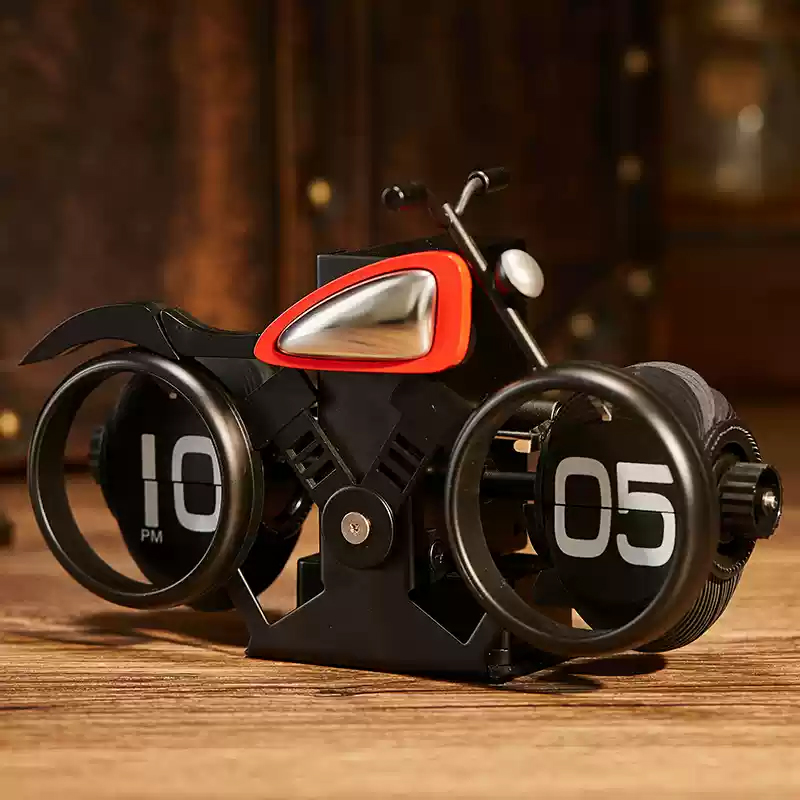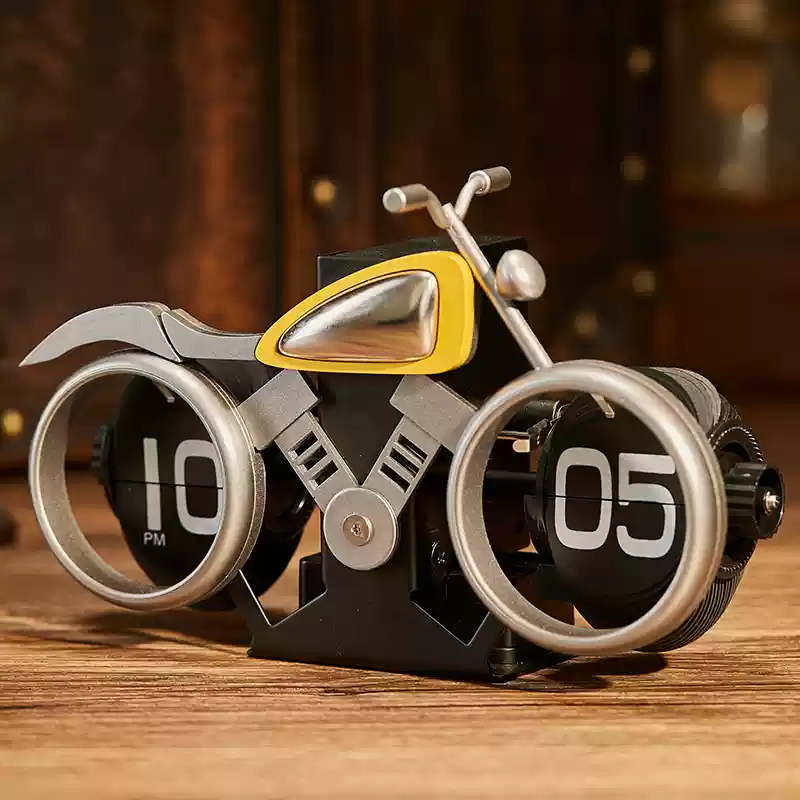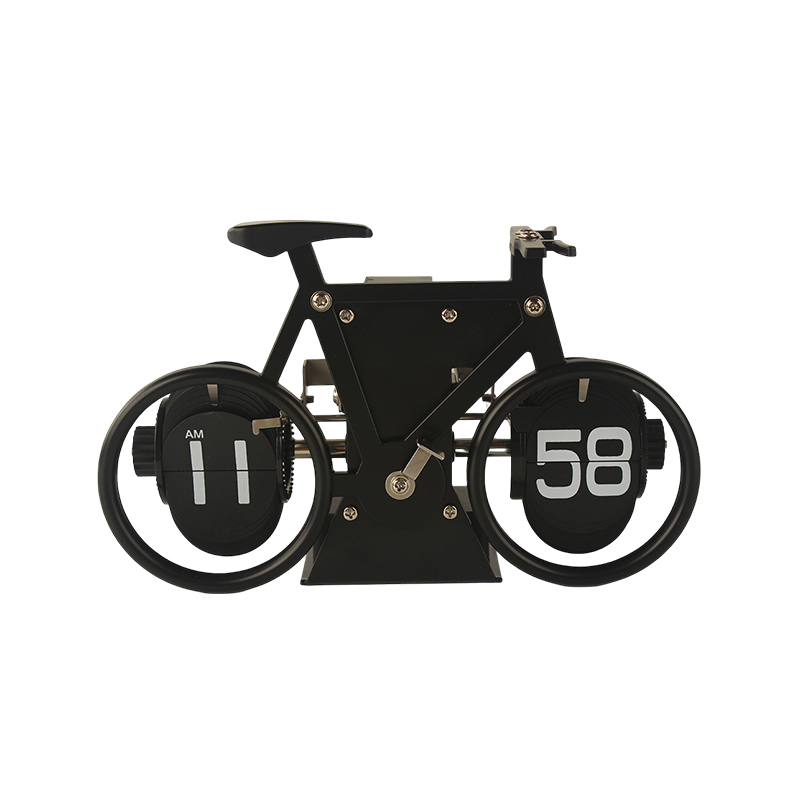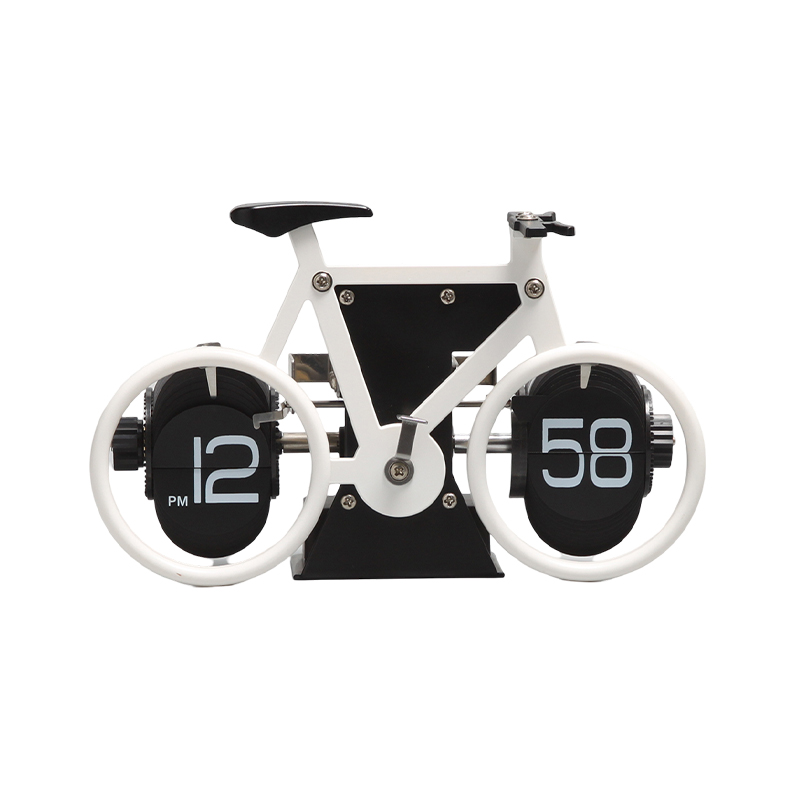How can the temperature and humidity monitoring of the flip clock be accurately displayed?
Release Time : 2025-06-11
To achieve accurate display of temperature and humidity, flip clock needs to carry out systematic optimization in multiple links, such as sensor selection, circuit design and structural layout. Every detail is like a part of a precision instrument, which jointly guarantees the reliability of monitoring data. The accuracy of temperature and humidity monitoring depends not only on the performance of the hardware, but also on the precise coordination of the software algorithm, just like a coordinated and orderly symphony, in which each part plays a key role.
The selection of sensors is the first step to ensure accurate monitoring of temperature and humidity. High-quality temperature and humidity sensors must have high sensitivity and stability, and can quickly respond to subtle changes in temperature and humidity under different environmental conditions. Temperature sensors usually use thermistors or thermocouples. Thermistors must be of high precision and good consistency. The law of change of their resistance value with temperature must meet strict standards to avoid measurement errors due to deviations in their own characteristics.
Humidity sensors mostly use capacitive or resistive principles. The dielectric constant of capacitive humidity sensors must be sufficiently sensitive to humidity changes, while resistive sensors must ensure that the change in resistance value of conductive materials during moisture absorption or dehumidification has a good linear relationship. At the same time, the response time and hysteresis of the sensor must also be strictly controlled to ensure that the data can be fed back in a timely and accurate manner when the ambient temperature and humidity fluctuate.
Sensor calibration and compensation are key steps to improve measurement accuracy. Even if the performance of a newly manufactured sensor is excellent, there may be certain initial errors, so these deviations need to be corrected through calibration. During the calibration process, the sensor is placed in a standard temperature and humidity environment, compared with a high-precision standard instrument, and the deviation values at different temperature and humidity points are recorded to form a calibration curve. In actual use, the output signal of the sensor is corrected according to the calibration curve to improve the accuracy of the measurement. In addition, environmental factors such as air pressure and electromagnetic interference may also affect the measurement results of the sensor, which need to be compensated by software algorithms. For example, temperature changes can affect the performance of the humidity sensor. A correlation model between temperature and humidity measurement values can be established. During data processing, the humidity measurement results can be compensated according to the real-time temperature to eliminate the error caused by temperature drift.
The design of the signal processing circuit directly affects the acquisition accuracy of temperature and humidity data. The weak electrical signal output by the sensor is easily interfered by noise during transmission and processing, so a low-noise, high-gain amplifier circuit needs to be designed. The selection of operational amplifiers should take into account the characteristics of low noise, low drift and high input impedance to avoid the noise of the amplifier itself affecting the signal quality. The design of the filter circuit is also crucial. By reasonably selecting the parameters of the filter capacitor and resistor, high-frequency interference signals can be filtered out and useful temperature and humidity signals can be retained. At the same time, the accuracy of the analog-to-digital conversion module cannot be ignored. The high-resolution analog-to-digital converter can convert analog signals into digital signals more accurately and reduce quantization errors. The layout and wiring of the circuit must also follow the principle of anti-interference, shorten the signal transmission path as much as possible, and avoid the intersection of signal lines and power lines to reduce the impact of electromagnetic interference on the signal.
The installation position and structural design of the temperature and humidity monitoring module in the flip clock will affect the accuracy of the measurement. The installation position of the sensor should avoid the airflow disturbance caused by the movement of the page-turning mechanism, and should not be close to the heating elements of the clock, such as the display or the chip on the circuit board, so as to avoid the local temperature abnormality affecting the measurement results. At the same time, the sensing surface of the sensor needs to be fully in contact with the external environment to ensure that the changes in temperature and humidity can be sensed in time. The design of the flip clock shell should take ventilation into consideration. It should not allow dust or debris to easily enter and affect the performance of the sensor, but should also ensure that the air can circulate smoothly so that the sensor can accurately reflect the real temperature and humidity of the environment. For some flip clocks with split design, the temperature and humidity sensor may be installed in the external probe. At this time, it is necessary to pay attention to the shielding of the connection line between the probe and the host to prevent the signal from being interfered during the transmission process.
The optimization of software algorithms is an important means to improve the accuracy of temperature and humidity display. By establishing a suitable mathematical model, the data collected by the sensor is processed and analyzed. For example, the sliding average filter algorithm is used to smooth the real-time data to reduce the impact of random noise; for the slow changes in temperature and humidity, the weighted average algorithm can be used to give the most recent data a higher weight and improve the response speed. In addition, a self-learning algorithm can be introduced to allow the flip clock to automatically accumulate environmental data during long-term use, and optimize the measurement results according to different usage scenarios and time patterns. For example, the change patterns of indoor temperature and humidity may be different during the day and at night. The algorithm can correct the current measurement value based on historical data to further improve accuracy. The software also needs to have the function of detecting and processing abnormal data. When the sensor output data is obviously abnormal, it can automatically identify and take corresponding measures, such as re-collecting data or issuing a fault prompt.
The temperature and humidity calibration function of the flip clock needs to be easy for users to operate and maintain. In order to ensure the measurement accuracy in long-term use, the flip clock should be designed with a calibration interface or menu to allow users to calibrate the temperature and humidity display when necessary. The calibration process should be simple and intuitive, and users can complete it without professional equipment. For example, the user can place the flip clock and the standard thermometer and hygrometer in the same environment, wait for a period of time, enter the calibration mode through the clock's menu, and adjust the clock's temperature and humidity readings according to the display values of the standard instrument. After the calibration is completed, the clock automatically saves the calibration parameters to ensure the accuracy of subsequent measurements. Regular calibration can effectively compensate for the performance drift that may occur after long-term use of the sensor and maintain the accuracy of the temperature and humidity display.
Environmental adaptability in actual use is also an important factor in ensuring accurate temperature and humidity display. Flip clocks may be used in different environments, such as dry northern winters or humid southern summers, which requires its temperature and humidity monitoring module to maintain stable performance over a wide temperature and humidity range. When selecting sensors and designing circuits, the impact of extreme environments needs to be considered. For example, sensors that can operate normally in the temperature range of -10°C to 50°C and humidity sensors with small measurement errors in the humidity range of 0%RH to 100%RH should be selected. At the same time, the software algorithm must also have environmental adaptive capabilities, automatically adjusting compensation parameters according to different temperature and humidity ranges to ensure that temperature and humidity data can be accurately displayed in various environments.







